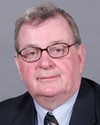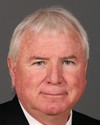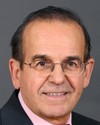So there's no....
Evidence of meeting #11 for National Defence in the 39th Parliament, 2nd session. (The original version is on Parliament’s site, as are the minutes.) The winning word was soldiers.
A recording is available from Parliament.
Evidence of meeting #11 for National Defence in the 39th Parliament, 2nd session. (The original version is on Parliament’s site, as are the minutes.) The winning word was soldiers.
A recording is available from Parliament.
BGen Hilary Jaeger
There are no shortcuts through me. I can support them. There are a number of steps between the Medical Council of Canada, the federal medical regulatory authorities, and the provinces that run the schools that do the training. There are different kinds of thresholds.
Generally, one of the big challenges these folks face is that they're required to do another period of residency that will be unpaid. What I can do, if they've passed the threshold examinations and found themselves a spot, is enrol them and provide them with a standard of living, and we can pay them as trainees. But they will not be seeing Canadian Forces patients until they finish their training programs and get a licence to practise.
Liberal

Joe McGuire Liberal Egmont, PE
Would you like to see provincial governments or the federal government short-circuit that so people will be available to tend our soldiers? Particularly nowadays, because of Afghanistan and Bosnia and so on, is there any request for the military to access this pool of qualified people?
BGen Hilary Jaeger
The short answer to the second question, sir, is no. I'm not in the business of second-guessing provincial regulators as to who is and who's not appropriate to hold a medical licence to practise. I think there's a fine balance between public safety and having appropriately trained and qualified providers, and quantity of care is a quality all its own.
We make liberal use of other mid-level providers, such as nurse practitioners and physician assistants, as a way to kind of be a force multiplier for primary care providers.
Liberal

Joe McGuire Liberal Egmont, PE
I suppose people can be missed in any system, either the civilian system or the military. But we see newspaper reports of people getting shot because they haven't been properly attended to or because people weren't listening to them or their families. These are people who had been in the military and so on. Is this because there's a lack of people to refer these people to?
BGen Hilary Jaeger
It's always a tragedy when you hear of somebody who gets involved in an altercation with police with a tragic outcome or of someone who somehow seems to have gone off the rails somewhere.
I think you have to be conscious that we don't cure everybody, particularly when it comes to mental health care. Generally, what you're trying to do is help people cope with their conditions on a chronic basis. You'll find that it's not linear. It's not like it's worse and then it gets better in a linear way. Sometimes people have relapses. Even with the best treatment for things like PTSD, if you search the literature and sort of take an average figure of how many people are helped by treatment and how many people are not, you'll get a split of about two-thirds who are helped and one-third who are not, even with the best available treatment. So you can mobilize a lot of resources and there will still be some people who unfortunately don't do well.
Conservative

The Chair Conservative Rick Casson
Thank you.
We now go to Mr. Hawn and then back to the Bloc.
Mr. Hawn, you have five minutes.
Conservative

Laurie Hawn Conservative Edmonton Centre, AB
Thank you, Mr. Chair.
Thank you both for being here.
I have two or three quick questions and then maybe a little longer one.
How do you break down the stats on battle deaths versus non-battle deaths?
Chief of Military Personnel, Department of National Defence
Non-battle deaths are deaths of individuals who are not killed actually in battle or in action. They are individuals who may have fallen, as was mentioned earlier, in a road accident. That's how the two are defined.
Conservative
Chief of Military Personnel, Department of National Defence
Oh, you want the number. Sorry.
The total since 2002 through to 2007 for non-battle deaths is eight, while the number of those killed in action is 66. Remember, this is up to December 31, 2007.
Again, if I can reiterate, because I have a hard time saying this, I go with the chief, in many cases, to the repatriations. At the end of the day, it doesn't matter how you fall for the nation. Falling for the nation is falling. Sadly, it needs to be depicted this way for whoever wants to see this. But clearly, falling for the nation, at the end, when you come off the airplane, isn't any different for the families.
Conservative

Laurie Hawn Conservative Edmonton Centre, AB
Believe me, I totally understand that.
I have a question from Ms. Gallant. You're paying 30% more for every service. Are we talking about just in Ontario, or is that across the country?
Chief of Military Personnel, Department of National Defence
It's across the country.
BGen Hilary Jaeger
It's not uniform, and of course it's largely a case of individual providers. Remember, in most of the country, physicians are small business people, and they choose to bill us at their provincial medical association rates, not at the health insurance plan rates negotiated with the government. There's about a 30% spread in that.
There's also some facility-fee billing by hospitals for access to beds and things, which drives up their costs.
Conservative

Laurie Hawn Conservative Edmonton Centre, AB
Thanks.
Going back to stats, do you have any historical data from previous conflicts, World War II and Korea, for things like non-battle injuries? I'm not talking about deaths. Are we seeing more?
Chief of Military Personnel, Department of National Defence
That's a fair question. I don't have that here. I just got most of this today, since the policy changed today. We looked at October, and the stats came here together. But I'm sure you could find the information and look at it.
The only caution I would give—and I knew there'd probably be a question about how this relates to U.S. or U.K. stats—is we have to be very clear that we have to look at the situation they're in. They are in different situations, and I think there's a danger in drawing parallels between certain statistics. I know you all know that, but I just wanted to raise it.
Conservative

Laurie Hawn Conservative Edmonton Centre, AB
A lot of reservists have gone and come back, and a lot of them have gone out to the boondocks and are not with battalions any more. I know you're addressing that.
You talked about screening at four to six months. I've met a lot of airplanes in Edmonton, shaken hundreds of hands, and looked into hundreds of pairs of eyes. With each 140-person load, I say to myself afterwards that six or eight of those folks will probably have problems.
Talk to me a little bit about what goes on at the company level or any other level back in the garrison before that four- to six-month period, or how we're trying to reach out to the reservists who may not be in that regimental environment.
Chief of Military Personnel, Department of National Defence
I'll provide the upfront piece from a unit point of view, and then I'll turn it over to Brigadier-General Jaeger to talk about the medical aspects.
Once the soldiers get off the ground, they've come through the third-location decompression in Cyprus. We need to stress that in many cases we're not picking up everybody in Cyprus. Some of it's self-identified and some of it's picked up sitting down with trained experts. But as Brigadier-General Jaeger said, the critical piece is to educate people to make them more aware, so that if they or their families see something about them that's different, they do so.
The first thing that happens is they head back to their units—I'm a Patricia in the 1st Battalion. People go off and take their post-deployment leave. The soldiers coming back to Quebec from this rotation will have a chunk of leave to reintegrate and get to know their families, because it's not as simple as one would think. Your wife or husband has been running the show for the last six months, and you come back and want to change things. It ain't that simple. I will just remind the committee that that is a component of third-location decompression. It's not all about mental health. There is a morale and welfare component to it to ensure that people get a chance to unwind.
Once soldiers take their post-deployment leave, they go back to normal duty. They're probably still in their teams, and the leadership will see them and talk to them. There have been many cases where the leadership thinks a soldier needs help, and they connect them to the medical system.
I'll turn it over to Brigadier-General Jaeger, who will give you that background piece.
Conservative
Chief of Military Personnel, Department of National Defence
I'm sorry.
Conservative

The Chair Conservative Rick Casson
No, that's fine.
We'll go to Mr. Bouchard, and then back to Mr. Rota.
Bloc

Robert Bouchard Bloc Chicoutimi—Le Fjord, QC
Thank you, Mr. Chair.
Thank you for being here. My question deals with trauma as a consequence of operational stress. There are several theatres of operation within military missions. Can you compare the trauma of soldiers sent to the Balkans with that of soldiers injured in Afghanistan?
BGen Hilary Jaeger
It is really hard to make that comparison. The numbers show a slight increase with the Afghan mission compared to the one in the Balkans. There are certainly people who suffered operational stress in the Balkans. Our numbers from that mission are not very precise. We did not do the same kind of post-deployment screening. So we cannot really compare the numbers.
At the time, there was a gap of about four to six years between the end of the mission and the time people came forward for treatment. They tried to heal for a very long time. But thanks to the screening we do now, that gap has been reduced to four to six months post-deployment. The screening process for those needing treatment has greatly improved and care is available much earlier. There has been a great deal of improvement in that area.
Bloc

Robert Bouchard Bloc Chicoutimi—Le Fjord, QC
Do you know of any other theatres of operation which have produced a high number of traumatized soldiers?
BGen Hilary Jaeger
Certainly. Many soldiers sent to the missions in Rwanda and Somalia came back with post-traumatic stress syndrome. The mission to recover the bodies of victims from the crashed Swissair Flight 111 also traumatized some rescue workers. It depends on the incident and on the individuals involved.
Do not forget that 90% of Canadian Forces personnel are not deployed. People can be involved in a car crash or be attacked as they are driving. All sorts of events can cause post-traumatic stress disorder. Women and men can be raped. There are many things which can cause Canadian Forces members to suffer from post-traumatic stress syndrome.